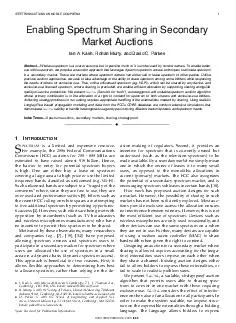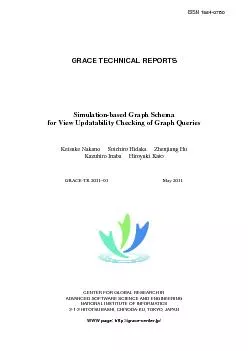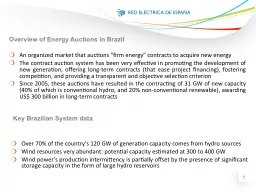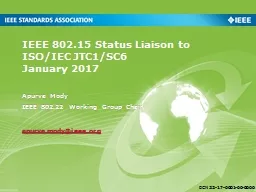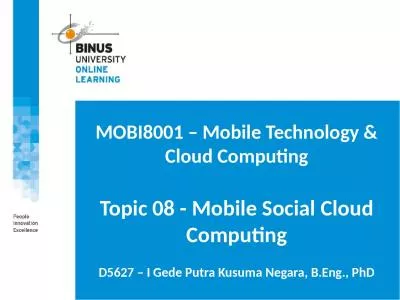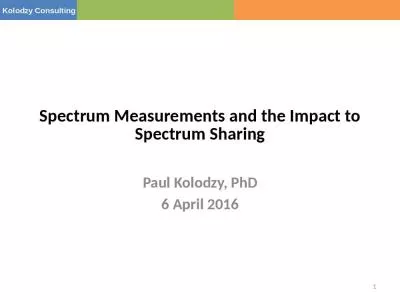PDF-IEEE TRANSACTIONS ON MOBILE COMPUTING Enabling Spectrum Sharing in Secondary Market Auctions
Author : calandra-battersby | Published Date : 2014-12-15
Kash Rohan Murty and David C Parkes Abstract Wireless spectrum is a scare resource but in practice much of it is underused by current owners To enable better use
Presentation Embed Code
Download Presentation
Download Presentation The PPT/PDF document "IEEE TRANSACTIONS ON MOBILE COMPUTING En..." is the property of its rightful owner. Permission is granted to download and print the materials on this website for personal, non-commercial use only, and to display it on your personal computer provided you do not modify the materials and that you retain all copyright notices contained in the materials. By downloading content from our website, you accept the terms of this agreement.
IEEE TRANSACTIONS ON MOBILE COMPUTING Enabling Spectrum Sharing in Secondary Market Auctions: Transcript
Download Rules Of Document
"IEEE TRANSACTIONS ON MOBILE COMPUTING Enabling Spectrum Sharing in Secondary Market Auctions"The content belongs to its owner. You may download and print it for personal use, without modification, and keep all copyright notices. By downloading, you agree to these terms.
Related Documents

